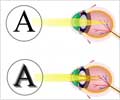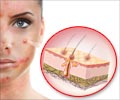What are the Symptoms of Albinism?
The symptoms of albinism depend on the specific type of albinism and are mainly related to the eyes, skin and hair.
Symptoms of The Eye -
The color of the iris is usually blue/gray or light brown with some people having a reddish or violet hue reflected through the iris.
Vision problems in albinism result from abnormal development of the retina and abnormal patterns of nerve connections between the eye and the brain. People with albinism have an unusual pattern for sending nerve signals from the eye to the brain.
One major abnormality of the eye in albinism involves lack of development of the fovea. The fovea is a small but most important area of the retina inside the eye. The fovea is the area of the retina that allows sharp vision, such as for reading, and this area of the retina does not develop in albinism. This results in lack of sharp vision and blurring of objects.
Other symptoms of the eyes include-
- Decreased sharpness in vision (visual acuity)
- Functional blindness
- Involuntary, irregular and rapid movement of the eye (Nystagmus)
- Lazy eye (Amblyopia)
- Sensitivity to bright lights or glare (Photophobia)
- Wandering eyes (Strabismus)
- Distortion of a viewed image (Astigmatism)
Symptoms Affecting The Skin-
- Patchy or total absence of the melanin pigment leaving the areas pale
Symptoms of The Hair -
- Forelock (portion of the hair near the forehead) turns white (seen in Waardenberg syndrome)
- Complete absence of pigment in the hair resulting in white hair
Other Symptoms include-
- Bleeding tendency (seen is Hermansky-Pudlak Syndrome)
- Problem with bowels (seen is Hermansky-Pudlak Syndrome)
- Breathing problems due to lung fibrosis (seen is Hermansky-Pudlak Syndrome)
- Deafness
- Increased susceptibility to infections
- Nervous system disorders










